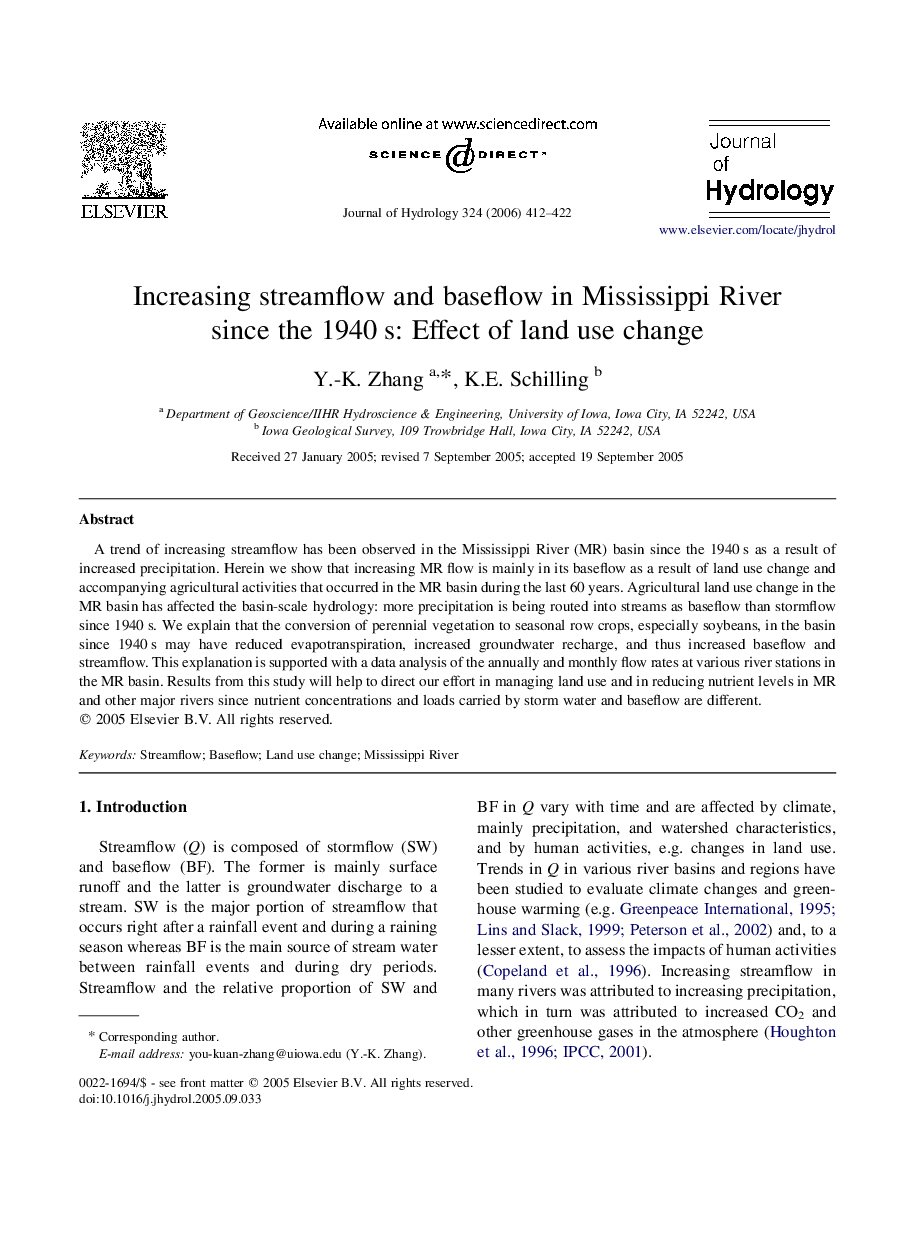| Article ID | Journal | Published Year | Pages | File Type |
|---|---|---|---|---|
| 4580406 | Journal of Hydrology | 2006 | 11 Pages |
A trend of increasing streamflow has been observed in the Mississippi River (MR) basin since the 1940 s as a result of increased precipitation. Herein we show that increasing MR flow is mainly in its baseflow as a result of land use change and accompanying agricultural activities that occurred in the MR basin during the last 60 years. Agricultural land use change in the MR basin has affected the basin-scale hydrology: more precipitation is being routed into streams as baseflow than stormflow since 1940 s. We explain that the conversion of perennial vegetation to seasonal row crops, especially soybeans, in the basin since 1940 s may have reduced evapotranspiration, increased groundwater recharge, and thus increased baseflow and streamflow. This explanation is supported with a data analysis of the annually and monthly flow rates at various river stations in the MR basin. Results from this study will help to direct our effort in managing land use and in reducing nutrient levels in MR and other major rivers since nutrient concentrations and loads carried by storm water and baseflow are different.
